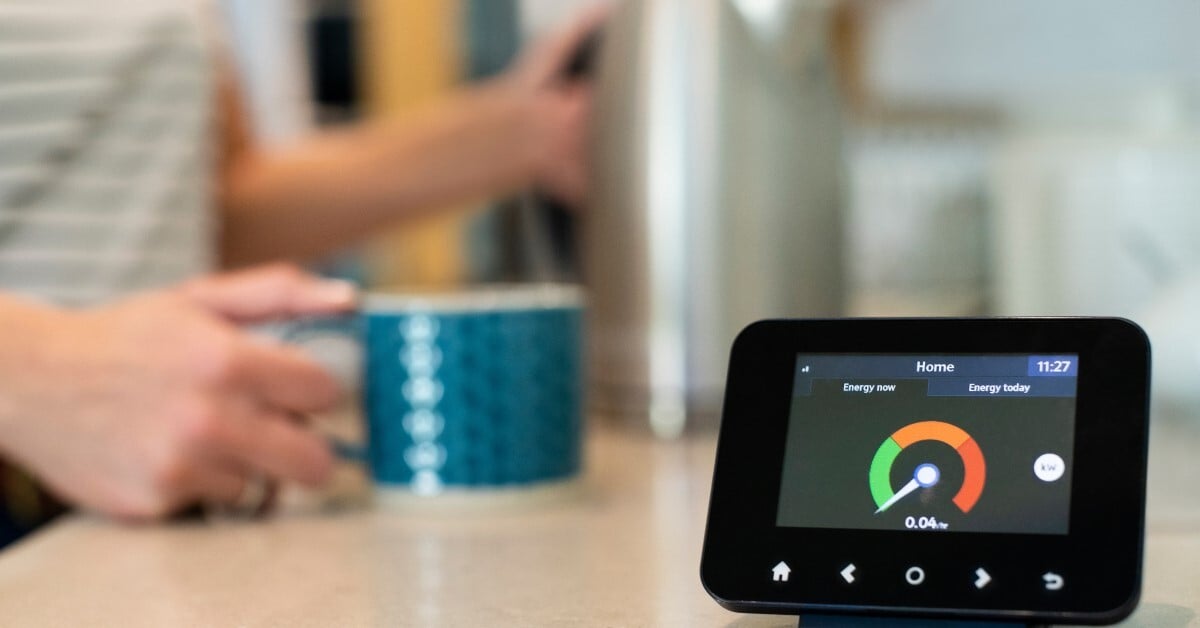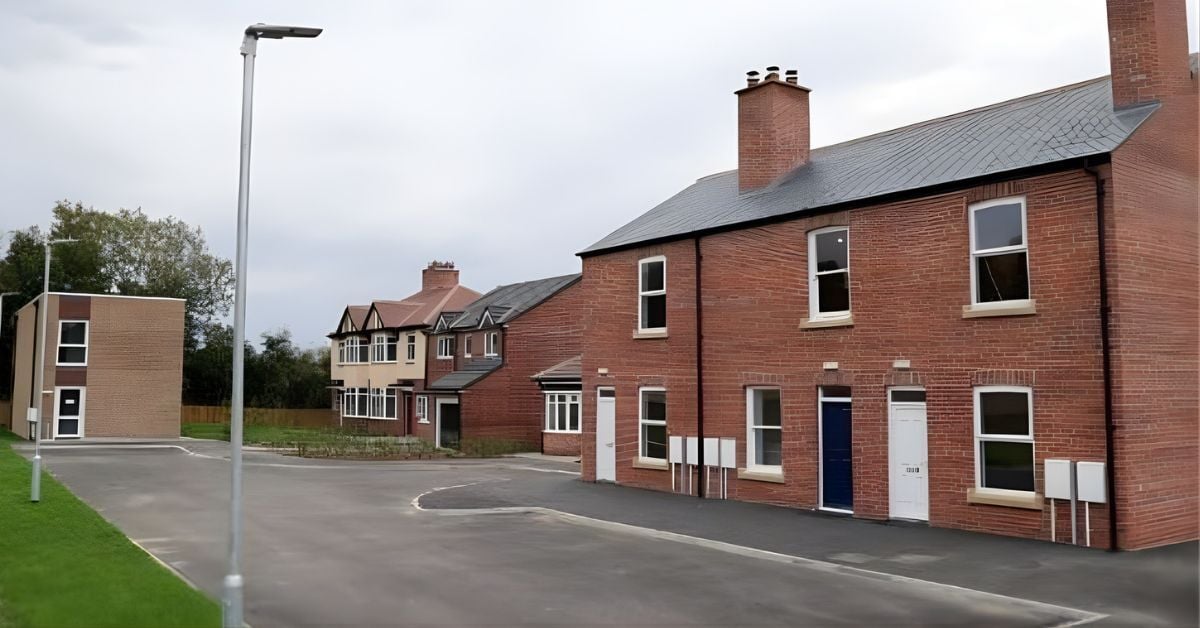What are the barriers to home energy technologies for vulnerable people?
31 October 2025 | By: Dr Jo Swaffield | 4 min read
When it comes to rolling out new home energy technologies, success depends as much on people as it does on the technology itself.
Dr Jo Swaffield, Research Associate in Consumer Behaviour at the Newcastle University Business School, explores the barriers to household energy upgrades, with a specific focus on vulnerable customers.
Content
- What do we mean by new ‘energy-related technologies’?
- How do household energy upgrades affect vulnerable people?
- Showcasing new energy-related technologies at ‘Futures Close’
- Vulnerability and barriers to technology adoption
- Increasing trust in technology among vulnerable consumers
What do we mean by new ‘energy-related technologies’?
New household energy technologies include renewable energy sources such as solar panels and heat pumps, energy storage systems, and AI-integrated smart home devices that help households monitor and manage their energy use. These innovations are designed to make homes more efficient, affordable, and sustainable by reducing both energy consumption and carbon emissions.
Examples include air and ground source heat pumps that provide low-carbon heating, solar batteries that store renewable electricity for later use, and smart thermostats or connected meters that automatically adjust energy use based on household routines. Together, these technologies have the potential to lower bills, improve comfort, and support the UK’s transition to net zero, but their success depends on how well they fit into people’s daily lives and how accessible they are to all households.
How do household energy upgrades affect vulnerable people?
Improving the use and efficiency of household energy can play an important role in reducing carbon emissions and helping people keep their homes warm. Being able to maintain a comfortable temperature is particularly important for vulnerable individuals, who may have additional thermal requirements and be more at risk from changes to the cost of energy.
New technologies and smart devices can improve energy efficiency and reduce energy consumption, but installing these things often relies on the initiative, funding and time of homeowners. This may be particularly challenging for vulnerable people, who have additional needs that require support throughout the retrofit process.
It is therefore crucial to understand how different people respond to the suggestion of new energy-related technologies and if there are any discernible differences between individuals based on vulnerability.
Showcasing new energy-related technologies at ‘Futures Close’
Working in collaboration with National Energy Action (NEA) and Northern Gas Networks (NGN), researchers at Newcastle University Business School have been using an innovative research facility to introduce members of the public to a range of energy-related technologies and assess their responses.
Futures Close is a purpose-built test-site of nine properties in Winlaton, Gateshead, commissioned and owned by Northern Gas Networks. There are five types of property, each built to original building standards and employing materials commonly used at the time, to represent UK housing stock from 1910 through to the modern day.

Some of the properties on Futures Close at the Net Zero Research Village, Gateshead.
The current project – the first to make use of the test-site – involved the commission and installation of eight energy-related technologies in different house styles across the site. The products look and operate as they would in a typical house, providing an immersive and representative experience for those who visit.
Twenty-seven participants were recruited for the project and provided with information about the technologies via a mock website. They were then invited to visit the demonstrator houses, to see the products in ‘real life’ and provide some feedback.
Vulnerability and barriers to technology adoption
The government uses the Low Income Low Energy Efficiency (LILEE) definition for fuel poverty in England (Scotland, Wales and Northern Ireland use different definitions). Under the LILEE indicator, a household is considered to be fuel poor if they are living in conditions of poor energy efficiency and low income. More specifically, if they are living in a property with a fuel poverty energy efficiency rating of band D or below, and when they spend the required amount to heat their home, they are left with a residual income below the official poverty line.
Based on a subjective measure of fuel poverty, 11 out of the 27 participants were classified as ‘at risk’ and therefore vulnerable in the context of age, health, or access to adequate energy.
Many of these individuals recognised the benefits of the products in terms of potential savings and improved thermal comfort, the latter being closely tied to health and age-related needs.
However, there were a number of barriers to consider:
Cost and installation
For participants at risk of fuel poverty, cost was the most significant factor influencing decisions about new technology. High upfront costs and uncertainty about long-term savings often acted as barriers, making affordability and clearly advertised returns on investment (ROI) essential for this group.
Vulnerable participants frequently highlighted the importance of practical solutions to retain heat, particularly in poorly insulated or drafty homes.
Installation challenges were another common barrier. Vulnerable participants preferred simple, minimally invasive technologies that were easy to install and affordable to repair or replace. Several respondents were interested to know whether or not ongoing maintenance could be managed themselves, and if they would even know where to begin if something went wrong.
For participants not at risk of fuel poverty or energy vulnerability, cost remained important but was less of a barrier. Non-vulnerable participants focused more on long-term efficiency and were open to higher upfront costs if the ROI was clear.
While heat retention was a shared priority, it was less urgent for this group since, in some cases, their homes had already undergone energy efficiency upgrades and so were better insulated.
The dual problems of risk and uncertainty
For both groups of participants, a more fundamental concern was linked to the risk of new and untested products. There was a strong sense of apprehension around the adoption of new technologies and this was underpinned by a series of concerns.
First, participants felt it was possible that the product might not produce results. The information about the technologies on the website included advertised energy savings and additional benefits. Participants were not averse to installing things if they could see the benefit but because they were unfamiliar with these products, they could not be confident that they would perform in the way they were supposed to.
Second, participants expressed concern that something could go wrong. There was a lot of discussion about the reliability of technology, and participants were particularly nervous about products that required WiFi. They felt it would be especially difficult to find someone qualified to fix a new and unknown technology. ‘Mechanical’ products were preferred because they were more straightforward to fix. This was particularly important in the context of keeping warm.
Finally, participants were worried that regulations would change. Many participants were nervous about the possibility that they would purchase a recommended product and then find that the official guidance had been updated. Early adoption was therefore said to require a certain degree of ‘bravery’.
While risk was an issue for most participants, it was particularly important for those who were vulnerable because it exacerbated the barriers that they already faced. High upfront costs became insurmountable if ROI could not be guaranteed. A preference for straightforward, practical solutions became paramount if there was a risk of breakages and costly repairs. Potentially vulnerable participants therefore sought reassurance and transparency to reduce financial risks.
Increasing trust in technology among vulnerable consumers
There are several factors that should be considered in the ongoing promotion of new energy technologies:
- The site visit was an ‘eye opener’ for all participants. Vulnerable consumers in particular should be exposed to options for energy efficiency improvements that could improve their daily lives.
- People have a range of different needs and expectations. Tailored solutions should be developed based on household circumstances, ensuring that different groups have access to technologies that best meet their needs.
- Addressing risk-related issues would help with a number of other challenges. Government-backed endorsements and independent reviews would help to build trust and reduce concerns about risk and reliability.
Further information on these recommendations and the Futures Close research project can be accessed in the final report or by contacting the corresponding member of the research team: joanne.swaffield1@newcastle.ac.uk.
You might also like
- read the final report: Energy Village – Technology Adoption and Consumer Behaviour
- find out more about the Newcastle University project team:
- Dr Jo Swaffield, Research Associate in Consumer Behaviour, Newcastle University Business School
- Professor Savvas Papagiannidis, Interim Deputy Dean and Professor of Information Systems, Digital Innovation and Transformation, Newcastle University Business School
- Dr Dinara Davlembayeva, Lecturer in Digital Business, Newcastle University Business School
- Dr Davit Marikyan, Senior Lecturer in Information Systems, Newcastle University Business School
- Professor Diana Gregory-Smith, Professor of Marketing and Sustainability, Newcastle University Business School
- Professor Boguslaw Obara, Professor of Image Informatics, Newcastle University Business School
- explore more research from our Business School
- learn more about our new Newcastle Centre for Research Excellence (NUCoRE) for AI Safety
